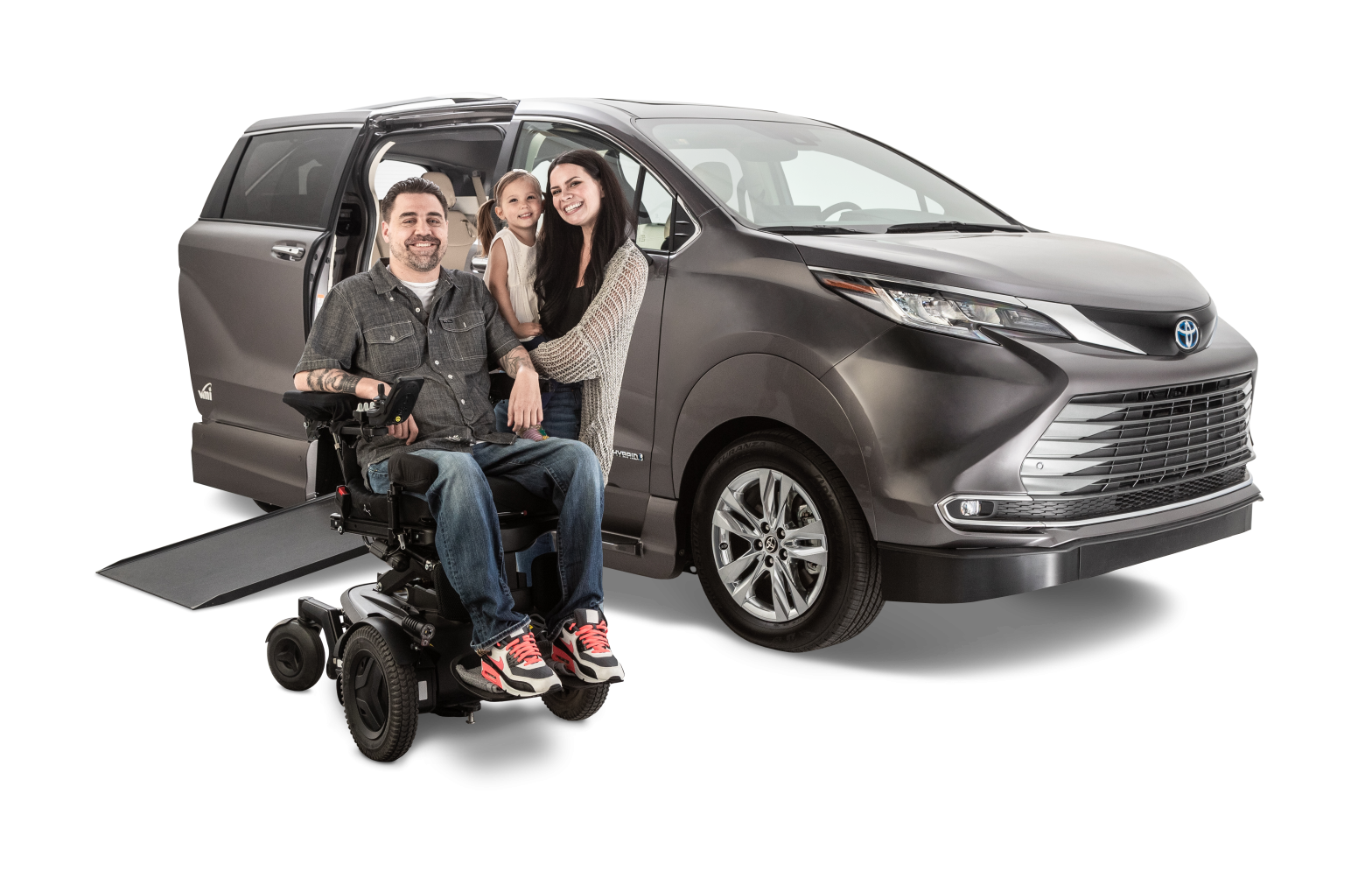Toyota values and understands the importance mobility brings to individuals, helping them to achieve goals that would otherwise be impossible or difficult to access. That’s why the company continuously seeks collaborations that will create innovative avenues for people to have the freedom and independence to move.
For years, BraunAbility and Vantage Mobility International (VMI) have been helping to provide modification solutions for Toyota Siennas for the disabled community, giving people access to travel and go places by adding features to assist with mobility challenges. With in-floor and fold-out ramps provided by VMI and BraunAbility, the Toyota Sienna gives guests the option of modifying the vehicle so they can drive or ride in comfort.
“BraunAbility follows a full stage-gate new product development process for our wheelchair-accessible vehicles (WAVs),” says Staci Kroon, global president and CEO of BraunAbility. “This includes designing accessibility features for the Sienna including lowered floor, power ramp, vehicle kneel and increased passenger door travel to enable wheelchair accessibility. BraunAbility Engineering also maintains all Toyota Sienna features for our customers to enjoy.”

Wheelchair-Accessible Conversions
BraunAbility and VMI offer three distinct types of wheelchairs entries: fold-out ramp, in-floor ramp and rear-entry ramp.
“BraunAbility and Vantage Mobility International are two of the best-known wheelchair-accessible vehicle conversion companies in the industry,” says Mark Oldenburg, senior national fleet operations manager of Fleet Marketing and Mobility at Toyota. “These two companies have been building wheelchair-accessible vehicles for decades and have built a loyal customer base.”
Fold-out Ramp: This model restructures the van’s floor to add height to the door. For easier entry and exit, the van lowers – or “kneels” – to allow the ramp angle to get as low as possible. And while the van is in motion, the ramp easily folds in half and lies flat against the door.
 “To accommodate the required ramp width, the passenger door travel must be extended beyond the original design,” says Kroon. “In addition, BraunAbility adds a vehicle-kneeling system that further lowers the ramp angle for our customers’ convenience when going in and out of the vehicle. The operation of the conversion is integrated with the Toyota Sienna to maximize the customer experience.”
“To accommodate the required ramp width, the passenger door travel must be extended beyond the original design,” says Kroon. “In addition, BraunAbility adds a vehicle-kneeling system that further lowers the ramp angle for our customers’ convenience when going in and out of the vehicle. The operation of the conversion is integrated with the Toyota Sienna to maximize the customer experience.”
In-floor Ramp: While this model stores its ramp underneath the floor of the vehicle, door height is higher and there’s a kneeling feature, just like with the fold-out ramp Sienna.
“To upfit a Sienna to become accessible, we carefully disassemble the van and preserve as many original parts as possible,” says Kyle Norton, CEO of VMI. “The floor of the vehicle is lowered and replaced with a new floor that houses the ramp system. VMI and Toyota parts are then thoughtfully integrated together as it’s reassembled.”
Rear-entry Ramp: This model does not change the front of the Sienna chassis but does add a path to the back of the vehicle for wheelchair entry. This Sienna is ideal for customers who do not always have a wheelchair in the car. The middle seat can be removed or reinstalled, if needed.
“The Toyota Sienna is the perfect-size vehicle for wheelchair accessibility since it provides a large interior space and can support the required conversion, which lowers the floor of the vehicle approximately 14 inches to provide sufficient door opening width and height for vehicle ingress and egress for persons in wheelchairs,” says Oldenburg.
Other Assistive Options: Additionally, BraunAbility and VMI provide additional van modifications including scooter lifts and other assistive products to Toyota customers.
“Toyota has built a world-class reputation in designing, engineering and manufacturing,” says Norton. “Given this, we seek to retain as much of the original Toyota look and feel as possible. We do this by working backward from Toyota’s finished product and determining the best way to integrate our own accessibility technology into the vehicle. To ensure VMI’s products work well with Toyota’s design and meet customer needs, we place significant effort into our engineering and design process through substantial end-user input, testing and quality control.”

Driving Growth
When Toyota introduced the Sienna to customers in 1998, the shape and size of the model allowed modifications to the vehicle to be more attainable. These conversions have helped give people with disabilities a way to meet their mobility needs.
“Customers tell us that our wheelchair-accessible Sienna actually changed their lives by providing them with the mobility to travel and do things without limits,” says Oldenburg. Kroon adds, “We want our customers to enjoy the same first-class comfort, quality and reliability expected from a Toyota Sienna, just with the added accessibility and maneuverability engineered with a BraunAbility conversion. The greatest compliment BraunAbility can receive is, ‘I didn’t know Toyota made wheelchair vans.’ That tells us that we’re designing a product that meets the remarkable standards of the Toyota brand.”

Mobility for All
Toyota believes that mobility goes beyond cars. It’s about “being of service,” with universal, inclusive, and accessible mobility solutions providing the greatest number of options to the greatest number of people. For those who may need financial assistance to take advantage of these amenities, Toyota can offer up to $1,000 cash reimbursement for persons with disabilities needing adaptive equipment.
“BraunAbility and VMI are helping further Toyota’s mission of mobility for all, including a person using a wheelchair, power chair or a scooter to aid in their mobility,” says Oldenburg.
